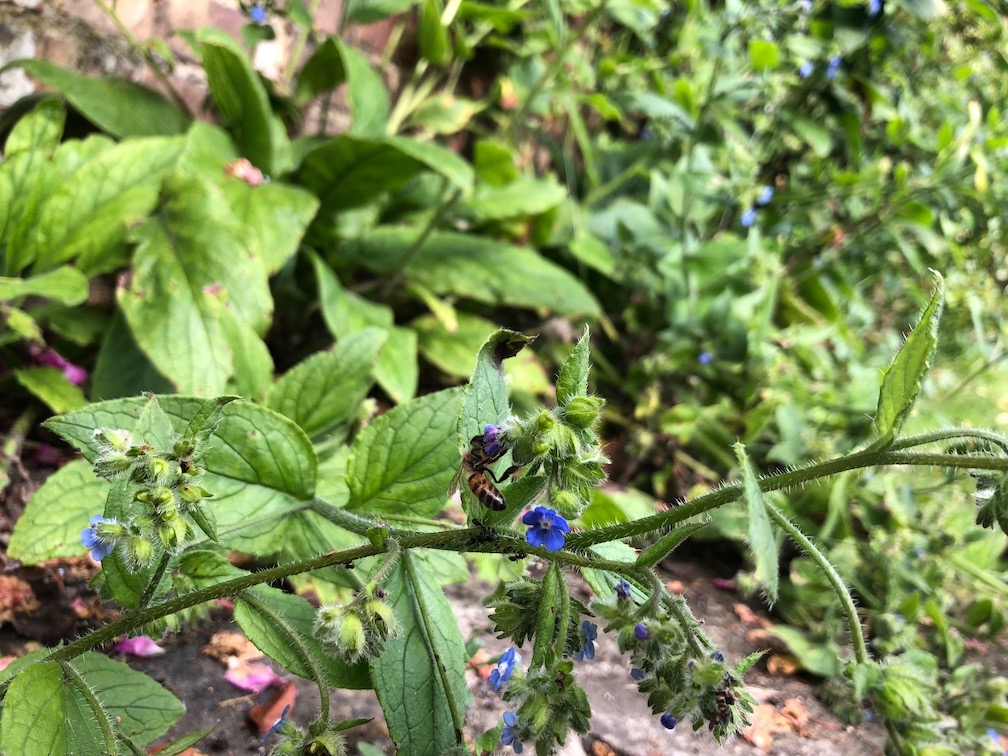We have a distinct lack of nesting birds this time around. Last year we had robins, blackbirds and wood pigeons all successfully rear their young in our garden.
Where have all the birds gone?
Since my last blog post, Emma and I have spent some time comparing this year’s garden with last year's. The robins still hop around ensuring no-one forgets this is their territory, but they haven't nested on our patch. Our two nest boxes are empty and the only fledglings we have seen have been a couple of starlings who nested in a neighbours tree and have been flapping clumsily in the branches.
I fear that one reason for fewer birds is prowling cats that I see creeping noiselessly along the fence and that keep me awake with their wailing at night. But there may be more to it than this and things may change. Perhaps the bug hotel we built this week will kick start a revival, with more tasty treats on offer for birdlife.
Next door and in the churchyard over the road we often see goldfinches flitting around the treetops. It would be nice for them to visit us occasionally. But I think what we really need it is a thrush. Preferably a whole mutation of thrushes to deal with the population of snails and slugs that seem to flourish more than any other creature and much to the detriment of all things green.
WE BUILT A BUG HOTEL
Compared to last year we have seen very few bees. There were a few in May but recently little or nothing. It hasn't been particularly warm and the lawn has been closely cropped. I shall now leave it to grow a little to encourage a few white clovers and perhaps bring a few of these fuzzy flyers back.
We rooted around and failed to find any millipedes or centipedes, both were easy to find this time last year. Even the woodlice seem more scarce.
Insects are a key part of a healthy environment. They are also a key food source for many reptiles, birds and mammals.
Although some mini-beasts can be detrimental to your garden (greenfly, snails and slugs for a start), others can actually help to maintain it. Not only by pollinating your flowers but also by controlling what are commonly regarded as pests. Ladybirds, for example, are great for tackling the problem of greenflies.
A “bug hotel” is a great way to provide a home for these insects and add a little wild to your garden.
This week we built one. To be specific Emma mostly stood around giving construction advice whilst eating ice lollies, but nevertheless we're calling it a team effort. Our insect home has a few tenants or at least prospective tenants looking around so fingers crossed. It was really a very simple thing to put together, with bits of bamboo, some old wood, pine cones and a few sticks shoved into a frame.











